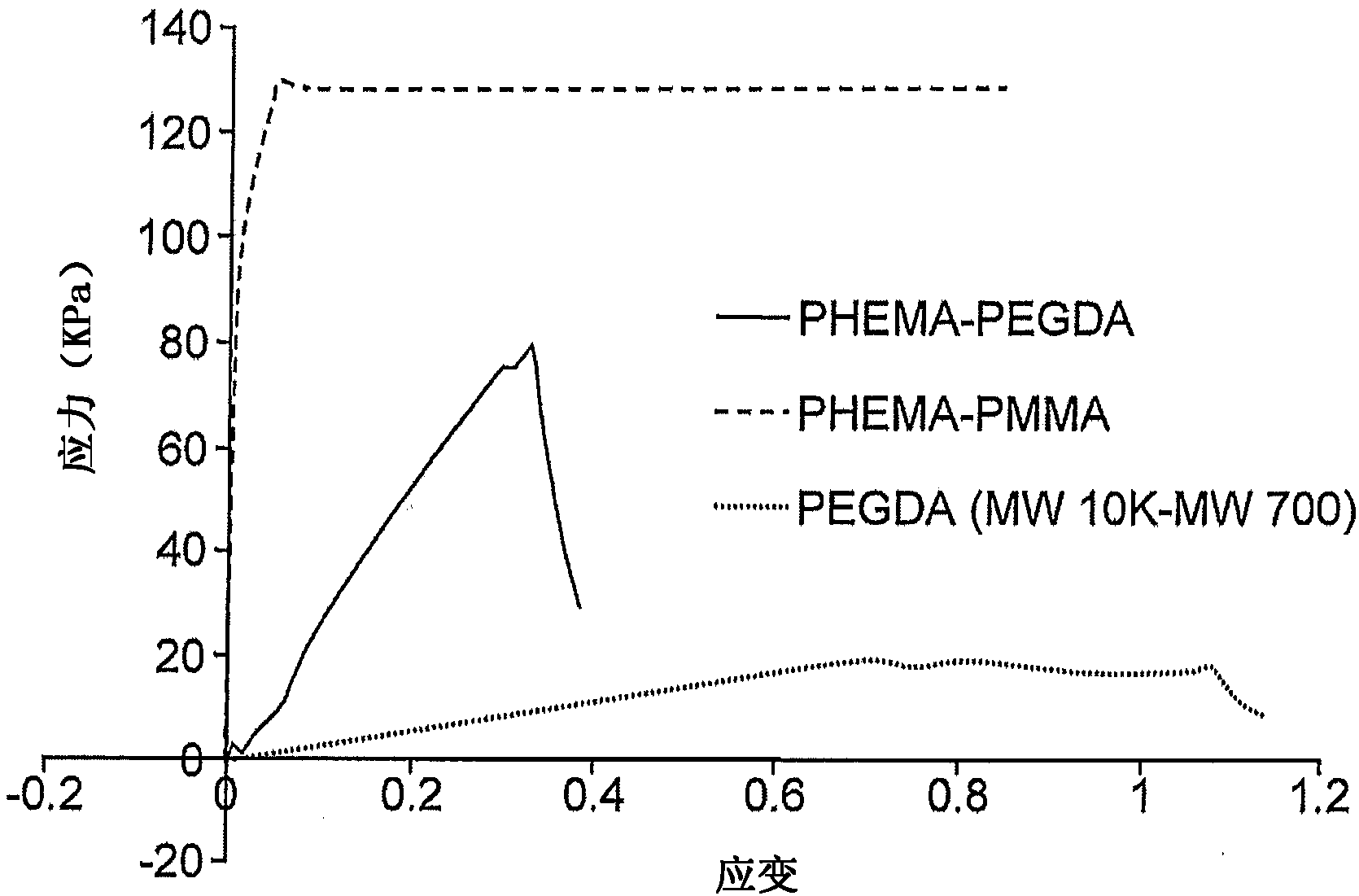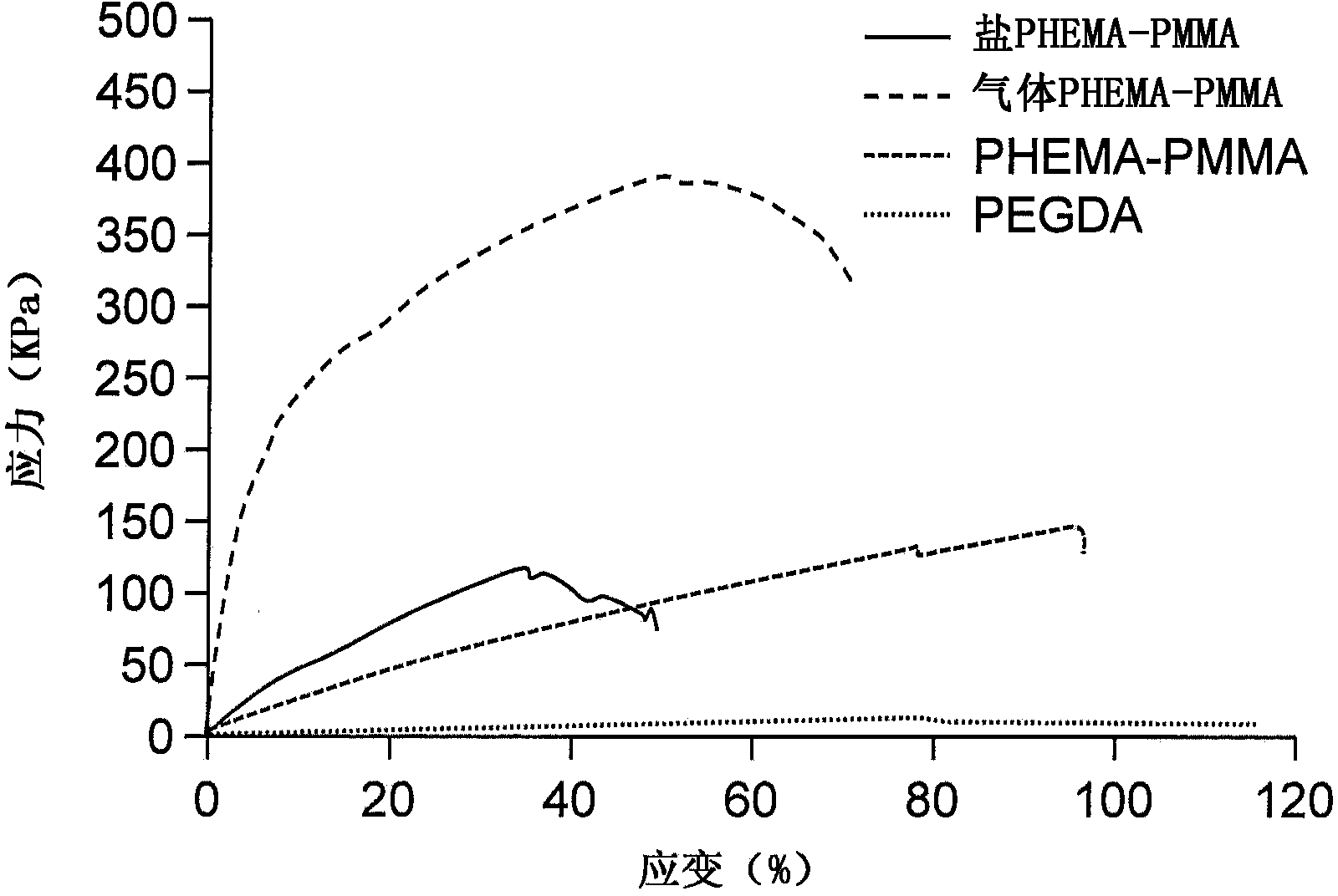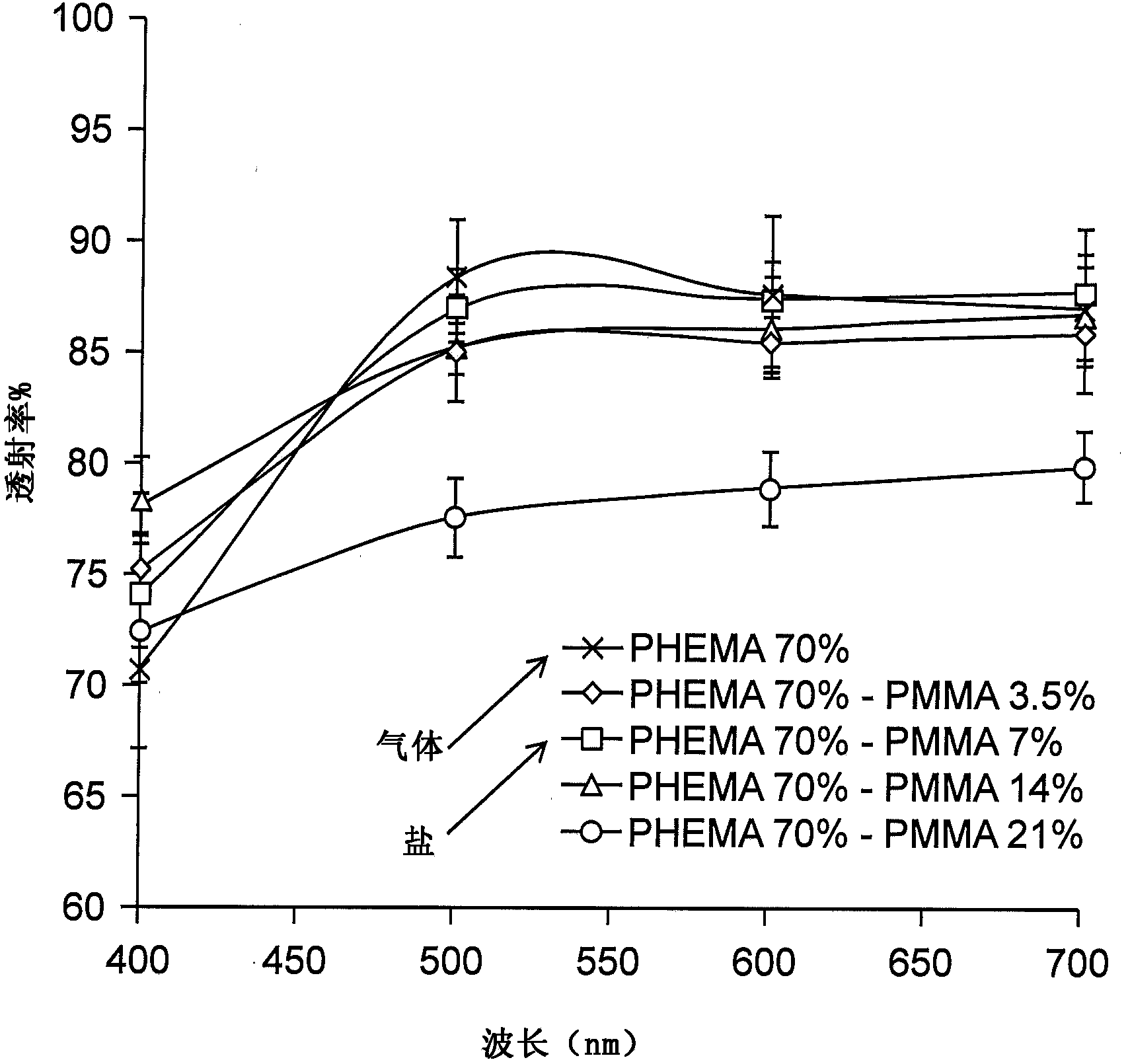A suturable hybrid superporous hydrogel keratoprosthesis for cornea
A porous hydrogel, hybrid-type technology for prosthetics, medical materials derived from mammals, immobilized on/in organic carriers, isotropic
- Summary
- Abstract
- Description
- Claims
- Application Information
AI Technical Summary
Problems solved by technology
Method used
Image
Examples
Embodiment 1
[0047] Example 1: Materials and methods
[0048] cell culture. Two cell types, stem cells and committed cells, were analyzed. Human mesenchymal stem cells (MSCs) were maintained in Gibco's α-minimum essential medium (with L-glutamine, without Contains ribonucleosides, does not contain deoxyribonucleosides). The HT-1080 human fibrosarcoma cell line was purchased from ATCC (Manassas, VA). Fibroblasts were cultured in Dulbecco's modified Eagle's medium (DMEM) supplemented with 10% fetal bovine serum (FBS) and 1% antibiotic / antimycotic. Change the medium every 2 to 3 days to remove waste and provide fresh nutrients. Cells in 5% CO 2 and was maintained at 37 °C in the presence of 95% air. cells in 3x10 3 cells / cm 2 The density was plated in tissue culture flasks until a 75-80% confluent monolayer formed. Cells were passaged by incubating cells with 0.25 mg / mL trypsin for 5 minutes and replated at the above densities. All cells used in the experiments herein were between p...
Embodiment 2
[0061] Embodiment 2: swelling ratio
[0062] Since collagen begins to gel rapidly after pH neutralization, it must be loaded into SPH immediately to promote even distribution throughout the SPH. Swelling occurs in less than 1 minute due to the interconnected large-sized pores produced by the SPH fabrication method. Soaking the SPH in the collagen solution allows easy and rapid access of the natural material to the pores by capillary action. Thus, where pre-seeding with cells is desired, the cells can be suspended in the collagen solution immediately prior to uptake. Swelling is determined by the extent and size of interconnected pores. SEM analysis of the pore structures in the three SPHs produced using 100, 200, and 300 mg of sodium bicarbonate revealed two types of pores: larger pores that appeared similar in size and shape in each SPH, and those that formed interconnected. Smaller holes for communication. Apparently, increasing the amount of sodium bicarbonate caused an...
Embodiment 3
[0066] Example 3: Adhesion staining
[0067] In pre-seeded scaffolds, collagen was observed to encourage fibroblasts to spread and form stress fibers in 3-D. Scaffolds without collagen accommodate clumps of round cells that cannot attach to the scaffold. PEGDA is inherently resistant to adhesion. Therefore, it was speculated that the lack of ECM cell binding sites in collagen-free scaffolds caused the circular morphology. After 48 hours, the collagen-free scaffolds were completely cell-free. With nothing to attach to, the cells tend to migrate off the scaffold and attach to the underlying tissue culture plate.
[0068] In contrast, collagen-loaded scaffolds showed cells retained within the scaffold and few, if any, cells attached to the underlying plate. Collagen within the pores of the hydrogel greatly enhances cell spreading and retention in 3-D. Microfilament stress fibers were clearly observed, suggesting that cell adhesion is mediated by available integrin binding si...
PUM
| Property | Measurement | Unit |
|---|---|---|
| strain rate | aaaaa | aaaaa |
| diameter | aaaaa | aaaaa |
| refractive index | aaaaa | aaaaa |
Abstract
Description
Claims
Application Information
 Login to View More
Login to View More - R&D
- Intellectual Property
- Life Sciences
- Materials
- Tech Scout
- Unparalleled Data Quality
- Higher Quality Content
- 60% Fewer Hallucinations
Browse by: Latest US Patents, China's latest patents, Technical Efficacy Thesaurus, Application Domain, Technology Topic, Popular Technical Reports.
© 2025 PatSnap. All rights reserved.Legal|Privacy policy|Modern Slavery Act Transparency Statement|Sitemap|About US| Contact US: help@patsnap.com



